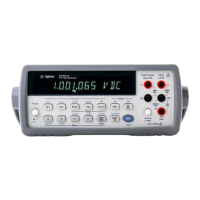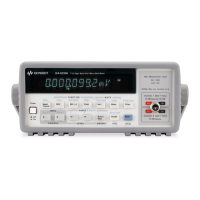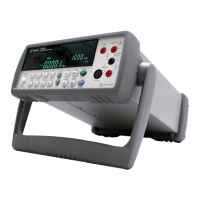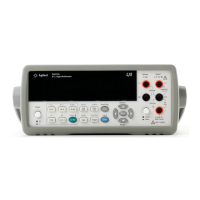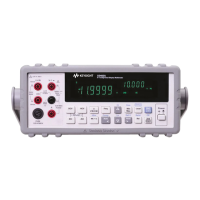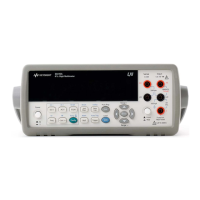350 Appendix E High Resolution Digitizing With the 3458A
measurement-to-measurement jitter. Through the track-and-hold path, the 3458A
can digitize repetitive signals up to 12 MHz at 50 kSamples/s with 16 bits
resolution by using sequential sampling (subsampling).
Digitizing Analog
Signals
Most digital signal processing systems may be represented as illustrated in
Figure 50.
In any digital processing system, there is a minimum allowable sampling rate
called the Nyquist Rate and it is specified by the Sampling Theorem, summarized
as follows:
When digitizing an analog signal, the sampling rate must be a least twice as
great as the highest frequency component (f
0
) in the spectrum of the sampled
signal. Frequency components higher than f
0
will "alias" down into the
frequency range below f
0
and interfere with the accurate representation of the
sampled signal. For example, since a square wave can be represented as an
infinite sum of sinusoids (Fourier Series) and contains very high frequency
components, attempting to digitize this signal without an anti-aliasing filter on
the input will severely alias the captured signal so that representations of the
actual signal may be meaningless.
Avoiding Aliasing To avoid signal distortion caused by aliasing, the effective sample interval must
meet the Nyquist criterion of 1/(2f
0
). In direct sampling, the effective sample
interval is the actual time between measurements selected. Therefore, through the
track-and-hold path or through the DCV path (explained in the next section), the
maximum signal frequency is 25 kHz or 50 kHz for 20 µs or 10 µs sample
intervals, respectively. If higher frequencies are present, then a low-pass filter of
bandwidth f
0
or less should be inserted in the signal path.
For sequential sampling, the effective sample interval is the time between samples
of the reconstructed wave form (refer to Figure 51). If you select an effective
sampling interval of less than 35 ns, the bandwidth of the track-and-hold path, 12
MHz, eliminates most distortion caused by aliasing. If the effective sample
interval is greater than 35 ns and frequencies higher than 12 MHz are present, an
external filter is necessary as well.
Figure 50.
In general, digital signal
processing systems
require a close look at
various functions
beginning with the
analog signal and
ending with results
meaningful to the user.

